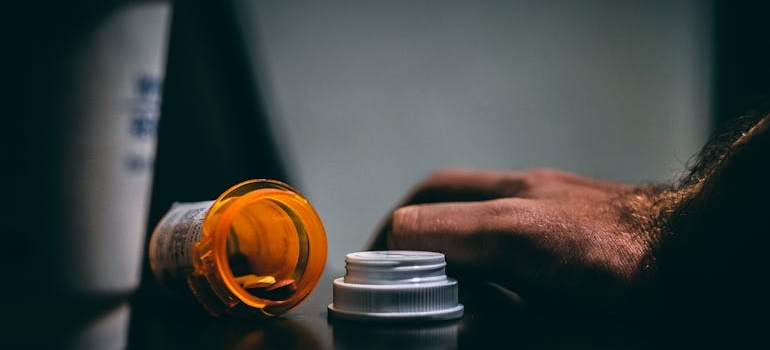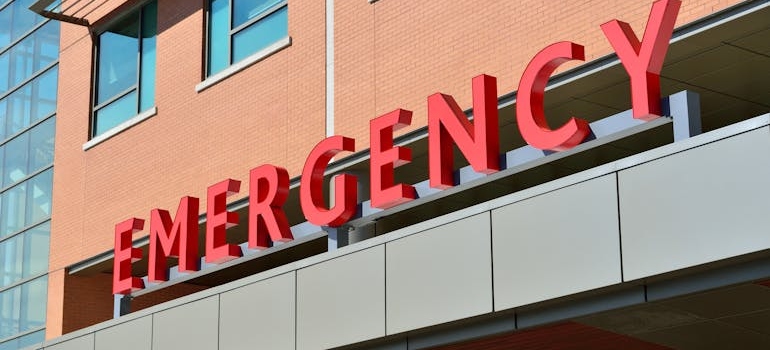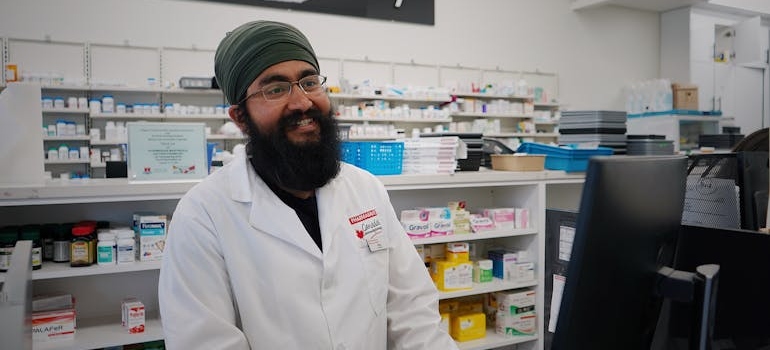Nearly 50 million Americans struggled with substance use disorder in the past year. It’s scary how fast dangerous drugs are becoming more common, leading to overdose deaths across the country. The deadliest drugs in 2024 in the USA are taking lives, and many people don’t even realize the risks until it’s too late. Fentanyl, synthetic opioids, and other substances are everywhere, making it harder to stay safe. If you or someone you love is facing this battle, you’re not alone. There are ways to get help, like rehab centers in West Virginia, where support is available to start recovery. This article will walk you through what’s happening with these dangerous drugs and what can be done to fight back. It’s important to understand these risks and know that there’s hope for those struggling.
Current Drug Trends in the U.S.
In 2024, the United States saw a shift in drug overdose trends. For the first time in five years, overdose deaths dropped, with around 97,309 reported in the 12 months leading up to April 2024. This 12% decrease offers a glimpse of hope, but the drug crisis is far from over. Deadliest drugs in 2024 in the USA, like fentanyl and other synthetic opioids, continue to drive many of these deaths.

While the decrease in numbers is encouraging, the rise of potent and dangerous substances remains a huge challenge. Drugs like meth and cocaine, often mixed with fentanyl, are still claiming lives at an alarming rate. It’s crucial to stay informed about these substances and know that help is available. The drug epidemic continues to impact communities, but every step toward awareness and recovery makes a difference.
Fentanyl: America’s Most Lethal Drug
Fentanyl is now the leading cause of overdose deaths in the U.S. It’s responsible for about 70% of all drug-related deaths. In 2022 alone, there were 107,941 overdose deaths, with fentanyl and other synthetic opioids at the center of the crisis. The problem grows worse as fentanyl is often mixed with other drugs like heroin, cocaine, or even fake prescription pills, making unintentional overdoses more likely.
The DEA seized record amounts in 2023, with over 79 million fentanyl pills confiscated. Sadly, teens are also victims, with an average of 22 dying every week due to overdoses, mostly driven by fentanyl. These are sobering statistics, but fentanyl rehab can help save lives. If you or someone you know is struggling, don’t hesitate to reach out. The deadliest drugs in 2024 in the USA are preventable threats with the right help.

The Dangers of Synthetic Opioids
Synthetic opioids, like carfentanil, are incredibly potent and far more dangerous than traditional opioids. Even small amounts can be deadly, making them one of the most serious threats today. These drugs are often mixed into other substances, so users might not even know they’re taking them. This makes synthetic opioids harder to detect and even more dangerous. If you or someone you love is struggling with opioid use, seeking help from drug rehab centers in WV can make a difference. Here are some challenges with synthetic opioids:
- Extreme potency compared to traditional opioids
- Difficulty in detecting them in other substances
- High risk of overdose from even small amounts
- Limited resources for immediate detection and intervention
Methamphetamine: The Resurgence and Its Devastation
Methamphetamine use is on the rise again, and its effects are devastating. About 2.5 million people in the U.S. used meth in the past year. Overdose deaths tied to meth have also surged, with more than 37,000 deaths reported in the latest 12-month period. The health risks are severe, ranging from extreme mental health issues like paranoia and hallucinations to physical decline, including dental problems and organ damage.
Meth also accounts for nearly half of all federal drug trafficking cases. It’s a growing problem that’s destroying lives across the country. But there is hope. If you or someone you love is struggling, meth rehab West Virginia trusts can offer a path to recovery. Meth is one of the deadliest drugs in 2024 in the USA, but it’s never too late to seek help and start healing.
Benzodiazepines: The Overlooked Prescription Threat
Benzodiazepines, often prescribed for anxiety or sleep issues, come with serious risks. Around 12.5% of U.S. adults use them—about 30.5 million people. While they can help some, misuse is a growing problem. About 2.1% of users misuse benzodiazepines, and 0.2% have a full-blown use disorder. Some misuse them to get high, while others fall into dependency.
The real danger comes when these drugs are mixed with opioids or alcohol. This combination increases the risk of overdose and can be deadly. Benzos slow the body down and mixing them with other depressants can lead to fatal breathing issues. If you or someone you care about is struggling with benzo misuse, benzo rehab can be a life-saving option. The deadliest drugs in 2024 in the USA include more than just street drugs—prescription meds are a hidden threat too.

The Increasing Risks of Fentanyl-Laced Cocaine
Cocaine use is becoming more dangerous, with a rise in both powder and crack cocaine use. It’s affecting communities across the U.S., with devastating consequences. What’s making it even worse is that cocaine is increasingly being mixed with fentanyl, a deadly synthetic opioid. This combination is driving up overdose rates because many users don’t know their cocaine is tainted. Fentanyl is so potent that even a tiny amount can be fatal.
This alarming trend is adding cocaine to the list of the deadliest drugs in 2024 in the USA. If you or someone you love is struggling with cocaine use, know that cocaine rehab offers a way to break free from this dangerous cycle before it’s too late. Seeking help could save your life and bring hope to those who need it most.
New Substances and Their Hidden Risks
New drugs like kratom are becoming more popular, but they come with serious risks. Kratom is often marketed as a natural remedy, but it can lead to dependency and cause health issues like liver damage, seizures, and addiction. As people look for alternatives to opioids, some turn to these lesser-known substances without fully understanding the dangers. Many of these drugs can be just as harmful, leading to unexpected side effects and life-threatening complications. If you or someone you know is using these emerging drugs, it’s important to stay informed and seek help if needed. Here are a few more substances to be aware of:
- Synthetic cannabinoids (K2/Spice): Linked to unpredictable effects and violent behavior
- Phenibut: Can cause dependency and withdrawal similar to benzodiazepines
- Salvia: Known for its intense, short-lived hallucinations and potential for abuse
How Mixing Drugs Is Escalating the Overdose Crisis
Polydrug use, where people mix substances like alcohol, opioids, and stimulants, is becoming more common and much more dangerous. Combining drugs increases the risk of overdose and makes treatment more complicated. For example, mixing alcohol and opioids can slow down your breathing to dangerous levels, leading to coma or death. Overdose deaths involving both alcohol and opioids jumped 41% between 2019 and 2020.
When alcohol is mixed with stimulants, the heart is put under extreme stress, raising the risk of heart attacks or strokes. Mixing substances also leads to unpredictable effects, making it hard to know how your body will react. If you or someone you care about is struggling with this, seeking help from stimulants rehab can offer a way out before it’s too late.

How Dangerous Drugs Are Flooding U.S. Streets
Drug trafficking networks and organized crime play a huge role in spreading dangerous substances across the U.S. These groups are highly efficient at distributing lethal drugs to various communities, contributing significantly to the drug crisis. By understanding their impact, we can better target efforts to cut off the supply and help those affected by addiction. Here’s how these networks contribute to the problem:
- Wide distribution: Traffickers have extensive networks that make drugs readily available in large and small cities alike.
- High potency products: Traffickers often increase the potency of drugs like fentanyl to boost their profit margins, which raises overdose risks.
- Innovative smuggling techniques: Organized crime groups use sophisticated methods to evade detection, ensuring a steady flow of drugs into the country.
- Economic motivation: The lucrative nature of drug trafficking encourages continual distribution, despite the risks to public health.
Strategies to Reduce Overdoses and Support Recovery
The statistics are alarming, and the need for change is urgent. Overdoses are claiming lives every day, and it’s clear we must act quickly. We’ll go over some practical ways to reduce overdoses and support recovery. If you or someone you care about is struggling, these steps can make a real difference.
Enhancing Mental Health Services
Enhancing mental health services is key to helping those struggling with addiction. Many people dealing with substance use also face mental health issues like anxiety or depression. Without the right support, these issues can make recovery even harder. Strengthening mental health services means giving people the tools they need to heal their minds, not just break free from drugs. If you or someone you know needs help, mental health services are available to offer guidance and care throughout the journey to recovery. Key areas for enhancing mental health services include:
- More access to individual therapy for addiction
- Increased availability of counselors and support groups
- Better integration of mental health and addiction treatment
- Support for co-occurring mental health disorders

Improving Prescription Drug Monitoring Programs (PDMPs)
Improving Prescription Drug Monitoring Programs (PDMPs) is an important step in reducing prescription drug abuse. These programs track the prescribing and dispensing of controlled substances, helping healthcare providers identify potential misuse early.
When PDMPs work well, they can prevent dangerous patterns, like “doctor shopping,” where people go to multiple doctors for the same prescription. This can make a huge difference in catching issues before they turn into full-blown addiction.
Strengthening these systems helps ensure doctors are aware of their patients’ prescription histories, making it harder for people to abuse drugs or accidentally mix medications that could lead to overdose. It’s a simple but powerful way to keep people safe and curb the misuse of prescription drugs. If we focus on improving PDMPs, we can better protect people from falling into the dangerous cycle of addiction.
Expanding Access to Naloxone
Expanding access to Naloxone in the United States is one of the most important ways to save lives. Naloxone can reverse an overdose in minutes, giving someone a second chance. With the deadliest drugs in 2024 in the USA claiming more lives than ever, making Naloxone widely available is critical. You can now find it in pharmacies without a prescription in many states, and some community programs even give it out for free.

Having Naloxone on hand can mean the difference between life and death for someone struggling with opioid use. If someone you know is at risk, make sure you have access to this lifesaving medication. It’s simple to use and can help keep a tragedy from happening. Every life matters, and Naloxone offers hope in an overwhelming crisis.
Overcoming the Deadliest Drugs in 2024
The rise of the deadliest drugs in 2024 in the USA has made it harder than ever to avoid the dangers of substance use. But help is out there. If you or someone you care about is caught up in this struggle, there are options to turn things around. The risks are real, but so is the possibility of recovery. Getting support from professionals can make a huge difference, and reaching out for help is the first step toward a safer future. Recovery takes time, but with the right help, it’s possible. Don’t wait until it’s too late act now to protect yourself or your loved ones. No matter how hard it feels, you don’t have to face it alone. There are people and resources ready to help you on the road to recovery.



